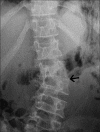A rare case of 46,XX gonadal dysgenesis and Mayer-Rokitansky-Kuster-Hauser syndrome
- PMID: 28216916
- PMCID: PMC5296832
- DOI: 10.4103/0974-1208.197694
A rare case of 46,XX gonadal dysgenesis and Mayer-Rokitansky-Kuster-Hauser syndrome
Abstract
46,XX gonadal dysgenesis is a rare genetically heterogeneous disorder characterized by underdeveloped ovaries with consequent, impuberism, primary amenorrhea, and hypergonadotropic hypogonadism. Mullerian agenesis or Mayer-Rokitansky-Kuster-Hauser (MRKH) syndrome is characterized by congenital aplasia of the uterus and the upper part (2/3) of the vagina in a woman with normal development of secondary sexual characteristics and a normal 46,XX karyotype. The phenotypic manifestations of MRKH syndrome may sometimes overlap with various other syndromes and require accurate delineation. The coexistence of both these disorders is extremely rare. Here, we report a case of 46,XX gonadal dysgenesis and MRKH syndrome with anatomically dispersed congenital anomalies unique among reported cases.
Keywords: 46; Mayer-Rokitansky-Kuster-Hauser syndrome; XX gonadal dysgenesis; hypergonadotropic hypogonadism; primary amenorrhea.
Conflict of interest statement
There are no conflicts of interest.
Figures





References
-
- Simpson J. XX Gonadal Dysgenesis and Premature Ovarian Failure in 46, XX Individuals Glob. libr. Women's Med. 2008 DOI 10.3843/GLOWM.10355.
Publication types
LinkOut - more resources
Full Text Sources
Other Literature Sources
